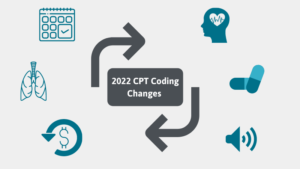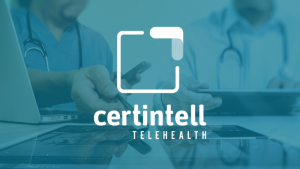OVERVIEW
Communication technology-based services (CTBS) are a set of CMS billable codes that can give way to a variety of possibilities that could improve patient and provider satisfaction in health care. The variety in CTBS allows each provider to choose digital services best-suited for their patient populations and maximize the potential.
CTBS can include the following¹:
Telephone Assessment and Management Services
These would be billable services under the circumstance where telehealth video/audio capabilities are not available, for new and established patients. These services entail a lengthier than normal phone call (more than five minutes) to address high-priority issues when the patient does not have access to other forms of communication, such as a patient portal.
Remote Evaluation of Patient Videos/Images
These include brief patient-initiated interactions in which the provider remotely evaluates videos or photos sent by the patient. This can occur synchronously or asynchronously.
Virtual Check-Ins
These include brief patient-initiated interactions to determine whether the patient needs to be seen for a full evaluation or treatment service.
E-visits
These services are asynchronous interactions in which the provider assesses the patient’s presented issue over the course of seven days, diagnoses the patient, and prescribes needed treatment.
Remote Therapeutic Monitoring (RTM) Services
Previously introduced in 2021, these services allow physicians who can’t bill for established Remote Patient Monitoring (RPM) services to bill for the remote monitoring of conditions within their retrospective fields, which can include the monitoring of respiratory system status, musculoskeletal system status, therapy adherence and therapy response.
As briefly seen above; The usability and benefits of CTBS can be plentiful. Take a look at the following way in which CTBS can improve your workflows.
BENEFITS
Increased Patient Accessibility to Care
We understand that while telehealth is a highly accessible form of care and greatly aids underserved patients, video visits are not always possible, especially for underserved patients. Device availability and connectivity limitations can impede improved outcomes that they would otherwise see with better resources. However, CTBS can serve as a remedy for these issues. Due to the nature of its flexibility, CTBS often maximizes the use of patients’ basic resource availabilities.
For example, more often than not, a patient will have access to a landline or some cellular device on which to make calls. Clinicians could possibly use Telephone and Assessment Management Services as a way to provide accessible preventative care interventions or identify worsening issues before they become more costly.
E-visits are also a highly accessible way to conduct routine check-ins or manage acute illnesses, without the hassle of inconvenience. Because e-visits only demand internet or data connection, underserved patients can access this form of care via smartphones, or in more public spaces that they would frequent, such as libraries.
READ HOW ACCESSIBILITY IN TELEHEALTH GOES BEYOND INTERNET ACCESS
Patient Follow-Up and Reinforcement
Many studies suggest that CTBS, such as e-visits, have a positive effect on clinical outcomes, for acute or chronic conditions.² For example, some researchers have found that e-visits can often have the same or even a decreased rate of follow-up primary care visits, compared to regular in-person check-ins.² Increased accessibility lends way to increased points of contact for care. This allows care to happen on a continuum, that then allows wellness to be an integrated element in a lifestyle, rather than an “every so often” discussion. When the latter occurs, patients often find themselves in a primary care office because a condition has worsened, because care wasn’t sought early or rigorously enough. The key to improved health outcomes for patients is consistency, but that doesn’t mean it has to be hard.
E-visits and telephonic management services can also help modify treatment plans when they may be losing efficacy. In-person visits often pose many administrative hurdles for patients. When taking time off from work, or facing a long commute to the doctor’s office, a patient can very easily become unmotivated to seek care. CTBS allows the provider to meet the patient halfway, when and where it’s most convenient for them. RTM and remote evaluation allow the provider to monitor progress and provide feedback along the way so the patient can begin to pinpoint what parts of their lifestyles are preventing them from staying on track.
Decreased Health Care Utilization
As clinicians continue to prioritize reducing readmissions in their treatment plans, CTBS remains important to consider. Increased points of contact for care does not automatically place the patient at risk for higher utilization. This is because on a larger scale, CTBS require less time from both the patient and the provider compared to in-person visits. The patient may be establishing contact regularly with their physician, however, five minutes to send information for a CTBS greatly outweighs the trek to go to the office. Additionally, because that increased reinforcement is provided, patients could be less likely to require more complex, costly services, such as ER visits.
This cost-efficiency goes a long way in value-based care environments. Even for the patient, CTBS services are often very affordable if the patient doesn’t have access to health coverage. For example, e-visits average $25 out-of-pocket for general consultations and $25-45 for specialty consultations.
READ MORE ON VALUE-BASED CARE AND TELEHEALTH
However, it should be noted that any telehealth service can decrease or increase health care utilization. The increase doesn’t signal all bad. If the service decreases utilization, this could mean that the patient needs less interventions and is set to stay on track for their health goals. If a telehealth service were to increase utilization, this could signal that patients are now more easily able to access care than they were before in an environment where in-person was the only option. Increased health care utilization can also arise from third-party factors, such as low digital literacy, from patients or providers. In this case, clinical leaders would fare well implementing a training protocol that would better streamline these services.¹
Increased Provider Flexibility
CTBS, if utilized correctly, should also reduce administrative burdens for clinicians. Remote services eliminate waiting room time and regulate patient flow. Asynchronous interactions permit clinicians flexibility in their schedule to triage these exchanges. This is important to note, especially as lower levels of clinician burnout are associated with increased clinician control in their schedules.
These remote-based services also provide flexibility in the sense that CTBS affords more providers the opportunity to provide digital health services. Many providers who cannot normally bill telehealth services to CMS, can often do so under CTBS coding guidelines. Most notably, Remote Therapeutic Monitoring (RTM) was specifically designed for providers, such as SLPs and physical and occupational therapists, in mind. CTBS gives these clinicians the opportunity to profit from the stress-reducing capabilities digital health provides and extends accessible health services into other domains. Specialty providers who choose to implement digital health services can often maximize their face-to-face time when more mundane tasks are allocated to a digital space.
BILLING CTBS
Ready to start implementing CTBS in your workflows? See which codes and modifiers to use to start benefiting from these services today¹:
Telephone Assessment and Management Services:
- CPT 98966: Telephone assessment and management service provided by a qualified nonphysician health care professional to an established patient, parent, or guardian not originating from a related assessment and management service provided within the previous 7 days nor leading to an assessment and management service or procedure within the next 24 hours or soonest available appointment; 5-10 minutes of medical discussion
- CPT 98967: 11-20 minutes of medical discussion
- CPT 98968: 21-30 minutes of medical discussion
Remote Evaluation of Patient Videos/Images:
- G2250: Remote evaluation of recorded video and/or images submitted by an established patient (e.g., store and forward), including interpretation with follow-up with the patient within 24 business hours, not originating from a related evaluation and management service provided within the previous 7 days nor leading to an evaluation and management service or procedure within the next 24 hours or soonest available appointment
Virtual Check-Ins:
- G2251: Brief communication technology-based service, e.g. virtual check-in, by a qualified health care professional who cannot report evaluation and management services, provided to an established patient, not originating from a related service provided within the previous 7 days nor leading to a service or procedure within the next 24 hours or soonest available appointment; 5-10 minutes of clinical discussion
- G2252: Brief communication technology-based service, e.g. virtual check-in, by a physician or other qualified health care professional who can report evaluation and management services, provided to an established patient, not originating from a related e/m service provided within the previous 7 days nor leading to an e/m service or procedure within the next 24 hours or soonest available appointment; 11-20 minutes of medical discussion (not billable to Medicare)
E-visits:
- 98970: Qualified non-physician healthcare professional online digital assessment and management, for an established patient, for up to 7 days, cumulative time during the 7 days; 5–10 minutes of communication
- 98971: 11–20 minutes of communication
- 98972: 21 or more minutes of communication
Remote Therapeutic Monitoring:
- 98975: Remote therapeutic monitoring (e.g., respiratory system status, musculoskeletal system status, therapy adherence, therapy response); initial set-up and patient education on use of equipment
- 98976: Remote therapeutic monitoring (e.g., respiratory system status, musculoskeletal system status, therapy adherence, therapy response); device(s) supply with scheduled (eg, daily) recording(s) and/or programmed alert(s) transmission to monitor respiratory system, each 30 days
- 98977: Remote therapeutic monitoring (e.g., respiratory system status, musculoskeletal system status, therapy adherence, therapy response); device(s) supply with scheduled (eg, daily) recording(s) and/or programmed alert(s) transmission to monitor musculoskeletal system, each 30 days
- 98980: Remote therapeutic monitoring treatment management services, physician/other qualified health care professional time in a calendar month requiring at least one interactive communication with the patient/caregiver during the calendar month; first 20 minutes
- 98981: Remote therapeutic monitoring treatment management services, physician/other qualified health care professional time in a calendar month requiring at least one interactive communication with the patient/caregiver during the calendar month; each additional 20 minutes (listed separately in addition to code for primary procedure)
Modifiers¹:
*Add modifier -GN to denote a service provided by a SLP
*Add POS code that reflects the location of the billing provider
How Certintell Can Help:
If CTBS does appeal to your organization, Certintell has all the technology you need to help you get started. HIPAA-compliant and customizable portals help facilitate communication between patient and provider. The portal is equipped with audio, video, store-and-forward, messaging and translating features. We also help with the onboarding process for any new digital health programs and conduct patient outreach, so that clinicians can focus on relationship building between them and the patient and lessen administrative burdens.
SOURCES:
¹ American Speech-Language-Hearing Association. “Use of Communication Technology-Based Services During Coronavirus/COVID-19.” ASHA, 14 Dec. 2021, www.asha.org/practice/reimbursement/medicare/use-of-e-visit-codes-for-medicare-part-b-services-during-coronavirus.



